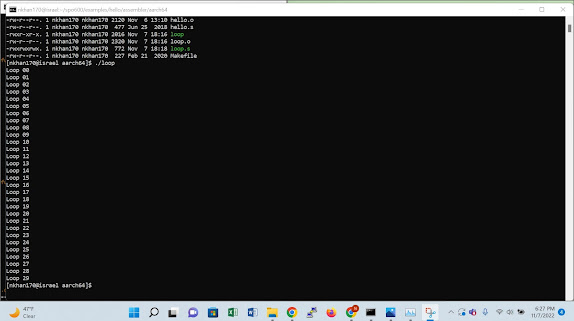Naziur Rahman khan Fall 2022 SPO600 Project (Algorithm-part2)
Implementation of ifunc-capable Software in Python(Continue)
The language to be used
For this project, I
will be using the Python language to discuss the implementation of
ifunc-capable software. The ifunc capability is a feature that allows users to
call a function in an executable file without actually having to write the code
for it. This can help reduce time and effort on programming projects and make
the process more efficient overall. In Python, this feature is accessed using
two different functions: `__import__` and `__callable__`. These functions allow
developers to create functions that can be called inside other files without
requiring any coding or compilation.
The first step towards
implementing ifunc-capable software in Python is understanding how these two
functions work and what they do. To begin, the `__import__` function is used to
load any module or package into the script. This can be done by providing the
file path of the module and then calling the `import` keyword. Once imported,
the `__callable__` function can be called within the module or package to call
a specific function inside it. This allows developers to create functions that
can be called without having to write any actual code.
The next step towards
implementing ifunc-capable software in Python is understanding how these two
functions work together. The `__import__` function will first look for a given
file in its location and attempt to import it if it exists. If not, an error
message will be displayed, letting the user know that the file cannot be found.
On the other hand, `__callable__` will then look through the imported module or
package and attempt to call a specific function within it. This allows
developers to create their functions without having to write any actual code.
Finally, once these
two steps have been completed, Python can be used to write programs that use
ifunc capable software to improve efficiency and reduce time spent on
programming projects. By using ifunc capable software, developers can also
easily create more complex programs as they can quickly call different
functions from different modules or packages without having to write any of the
code themselves.
In conclusion,
ifunc-capable software can be easily implemented in Python using the
`__import__` and `__callable__` functions. This feature allows developers to
quickly call existing functions from modules or packages without having to
write any of their own code, ultimately saving time and improving efficiency
while creating programs. With the help of ifunc capable software, developers
can easily create more complex programs and ensure that their projects are
completed in a timely fashion.
The overall operation
of the project
The overall objective
of this project is to explore the implementation of ifunc-capable software in
Python. Specifically, we will be looking at how to use the built-in ifunc
module to create a basic application that can perform basic operations such as
arithmetic calculations, data input and output, and logic flow control. We will
also look into additional features such as user interfaces, debugging tools and
security considerations. Additionally, we will evaluate existing solutions for
similar tasks in other languages so that other programmers can easily adopt our
system. Finally, we will test our program on different hardware platforms to
ensure its compatibility across multiple operating systems. With these
objectives in mind, it is expected that a functioning ifunc-based application
will be available to the public upon completion of this project.
We will approach this
task by researching and familiarizing ourselves with ifunc and its
capabilities. Next, we will create a basic application that can perform the
abovementioned operations using the ifunc framework. Afterwards, we will work
on additional features such as user interfaces, debugging tools and security
concerns. Finally, we will test our program on different hardware platforms to
ensure compatibility across multiple operating systems. Throughout the
development process, we plan to document our progress in order to provide a
guide for other developers implementing similar projects. Upon completing all
objectives, a working version of an ifunc capable software shall be made
available to the public.
This project will
provide a valuable resource to the software community, and it is expected that
ifunc will become an important part of many applications in the near future. We
want to encourage more use of this powerful technology within the Python
programming language by providing open-source solutions for developers.
Challenges expected
Implementing
iFunc-capable software in Python may be challenging due to several factors:
- Python is an interpreted
language, and for such a language, extra precautions must be taken when
dealing with the iFunc implementation. This could involve using resources
more carefully or ensuring that the code meets certain best practices
standards.
- Debugging errors in iFunc
systems may be difficult, as the debugging process can be long and
laborious.
- Security issues are a
significant concern when developing and implementing iFunc systems in
Python, as any vulnerability can compromise user data or hamper system
performance.
- Compatibility between different
versions of Python may present additional difficulties if not adequately
addressed during development.
While implementing
iFunc-capable software in Python may be challenging, the efforts will be
worthwhile with a correctly-functioning system.
Conclusion

Comments
Post a Comment